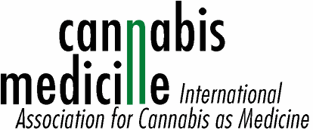INTERNATIONAL ASSOCIATION FOR CANNABIS AS A MEDICINE
Bulletin of 26 April 2009
1. Canada: Supreme Court ends the government’s monopoly on the
growing of cannabis for medicinal purposes
Canadians who are legally permitted to use cannabis for medicinal
purposes will be allowed in the future to choose cannabis from
other suppliers than the government after the Supreme Court on
23 April refused to hear an appeal of a ruling that put an end to
the federal government monopoly. A three-judge panel, without
giving reasons, rejected the Justice Department’s application to
challenge a Federal Court of Appeal decision that gave licensed
producers the right to grow cannabis for more than one patient.
The Supreme Court’s decision to stay out of the matter effectively
upholds the 2008 ruling, which dismissed the government’s
argument that the industry would be thrust into deregulation if the
court loosened federal restrictions. A group of patients had
challenged the federal regulations, arguing that the government-
issued cannabis is too weak and that they should have the option
to find their own supply. The appeal court decision struck down
government regulations that authorized patients who cannot grow
their own cannabis to designate a grower, who is allowed to grow
only for one patient, or obtain government-issued cannabis. There
are about 2,000 people legally allowed to use cannabis for medical
purposes.
(Source: Ottawa Citizen of 23 April 2009)
2. USA: Number of patients who use cannabis for medical purposes
significantly increased in recent months
According to a report by the news channel MSNBC there is a
significant increase of patients who use cannabis to treat their
illnesses in the 13 states that allow its use. It would be difficult to
compare states and numbers. MSNBC cites numbers of the state
of Colorado. Colorado registers medical cannabis users since
implementing its law on 1 June 2001. As of the end of 2008, there
were 4,720 applications received, almost all of which had been
approved. But as of 28 February of this year, that number stood at
6,796, an increase by about 30 per cent in just two months.
Several possible reasons are given. Among them is the signal by
Barack Obama not to use federal cannabis laws to ignore state
laws as the Bush administration did. Another reason may be the
economic crisis as more people without insurance are seeking
alternatives to costly medications. Another factor contributing to
the spike may also be simply that people who had contact with
cannabis in the 1960s and 1970s, when they were young, and now
suffer from different diseases as older people, are more likely to
seek it out for health reasons than the generation before them.
(Source: MSNBC of 15 April 2009)
3. News in brief
Science: Obstructive lung disease
According to Canadian researchers, who surveyed a sample of
878 people aged 40 years or older in Vancouver, Canada, smoking
both tobacco and cannabis increased the risk for the development
of respiratory symptoms and obstructive lung disease more than
the use of tobacco alone. However, the use of cannabis alone
was not associated with an increased risk of respiratory diseases.
(Source: Tan WC, et al. CMAJ 2009;180(8):814-20.)
Science: Aging
According to basic research at the Ohio State University, USA, a
synthetic cannabinoid (WIN 55,212-2), which acts similar as
natural dronabinol, protected against some aspects of normal and
pathological aging in animals, namely brain inflammation and the
decline in the new formation of nerve cells. (Source: Marchalant
Y, et al. Neurobiol Dis 2009;34(2):300-7.)
Science: Medical use by teens
According to researchers from the University of British Columbia,
Canada, who interviewed 63 adolescents who used cannabis
many of them may use it to treat health problems. Twenty said
they used cannabis for the treatment of pain, sleep difficulty, and
problems with concentration. (Source: Bottorff JL, et al. Subst
Abuse Treat Prev Pol 2009, 23 April [Electronic publication ahead
of print]).
Science: Obesity
According to research at the University of Aberdeen, UK, a
natural cannabinoid (delta-9-tetrahydrocannabivarin, delta-9-
THCV), which acts as a cannabinoid receptor antagonist, reduced
weight in mice. A cannabis extract rich in delta-9-THCV was not
effective, probably because of the presence of small residual
amounts of THC. (Source: Riedel G, et al. Br J Pharmacol
2009;156(7):1154-66.)
Science: Stroke
According to research at the Medical University of Xi’an, China,
pretreatment with electroacupuncture reduced negative
consequences of cerebral ischaemia in animals (reduced infarct
size, improved neurological function). These effects were due to
an increased production of the endocannabinoid 2-arachidonoyl
glycerol and its activation of CB1 receptors. (Source: Wang Q, et
al. Stroke 2009 Apr 16. [Electronic publication ahead of print])
Science: Epilepsy
Basic research at the Virginia Commonwealth University, USA,
suggests a role for dysregulation of the endocannabinoid system in
the development of epilepsy. (Source: Falenski KW, et al. Brain
Res 2009;1262:64-72.)
4. ONE YEAR AGO:
Science: Cannabis was effective in the treatment of neuropathic
pain in clinical study
Science: Nabilone reduced pain, use of opioids and nausea in
patients with advanced cancer
Science: Cannabinoids may be helpful in the treatment of side
effects of anti-viral medications in patients with hepatitis C
Science: Anandamide effective against impotence in diabetic rats
TWO YEARS AGO:
World: The Commission on Narcotic Drugs of the United
Nations decided against reclassification of dronabinol (THC) due
to political reasons
Science: THC promotes weight gain in elderly subjects suffering
from appetite and weight loss
Science: Vaporization of cannabis is an effective method to
deliver THC according to a clinical study
Science: THC reduces cancer growth and spreading to other
organs in lung cancer in an animal study
(More at the IACM-Bulletin archives)
[International Association for Cannabis as Medicine (IACM)
>http://www.cannabis-med.org]
Am Mildenweg 6
D-59602 Ruethen
Germany
Phone: +49 (0)2952-9708571
Fax: +49 (0)2952-902651
Email: info@cannabis-med.org




 Creative Commons Attribution
Creative Commons Attribution